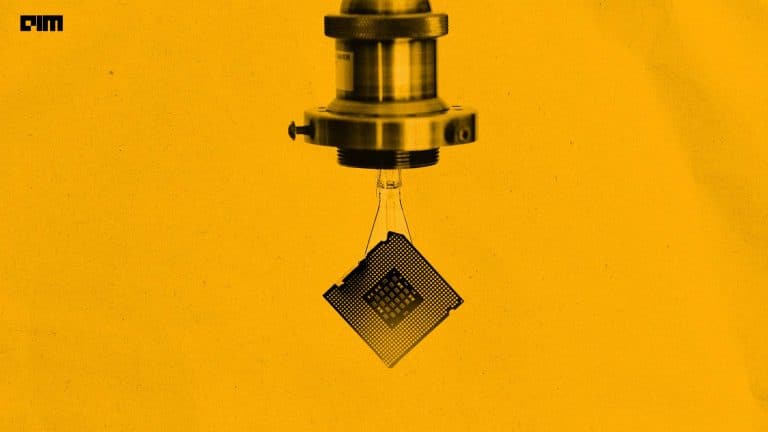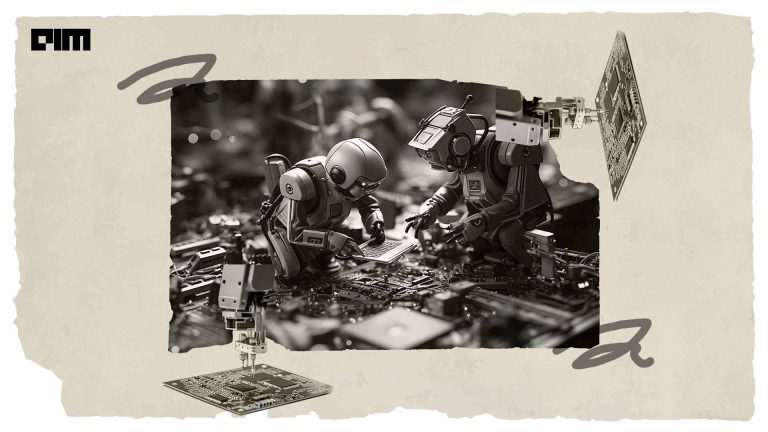|
Listen to this story
|
The trend towards economic nationalism has increased the geopolitical slant affecting the dynamic chips technology market. Moreover, the application of artificial intelligence and machine learning has become a fundamental semiconductor industry driver.
Chipsets are becoming increasingly application-specific as the semiconductor market shifts. Here are 12 major chips industry news from 2022 to keep you updated!
Japan announces plans to homegrow 2nm chips
Japan’s Ministry of Economy, Trade and Industry (METI) announced plans to reduce the dependency on Taiwan for semiconductors by establishing a design and manufacturing unit for next-generation chips. The target for advanced logic integrated circuit (IC) production at 2 nanometers (2nm) is 2027.
Read about METI’s strategy for the revival here.
US restricts sale of AI Chips to China
In September, the US government notified chipmakers Nvidia Corp and Advanced Micro Devices (AMD) to halt the export of AI chips for related applications to Russia and China. The notification was a part of Washington, DC’s tech crackdown on Beijing. Chinese officials have opposed the regulation and accused the US of deviating from fair competition. Furthermore, they believe that this move violates international economic and trade agreements.
TSMC’s first 3nm chip customer will be Apple
Apple has always been a step ahead of its competitors. According to a report published in August, Apple will be TSMC’s first 3nm chip customer for the M2-powered ‘MacBook Pro’ series. Taiwan Semiconductor Manufacturing Company (TSMC), announced ‘risk production’ of the much-awaited 3-nm process node tentatively in September 2022. The announcement is an upgrade from the 5nm process that was rolled out for mass production in 2020.
Biden signs Bill to boost US chips production
US President Joe Biden signed a Bill providing USD 52.7 billion in subsidies to boost efforts in US semiconductor research and production and rise in competition with China’s science and technology efforts. The “Chips and Science” law includes an investment tax credit for plants estimated to be worth $24 billion. The White House plans to invest in chip manufacturing companies that will receive grant awards once the Commerce Department clears the rules and regulations to underwrite projects. The legislation will authorise USD 200 billion for ten years in scientific research after passing separate legislation for investments.
IISc design framework for next-gen chipsets for AI applications
Indian Institute of Science (IISc) researchers developed a design framework to build next-generation analogue computing chipsets. Using the framework, they built a prototype of ARYABHAT-1 (Analog Reconfigurable technologY And Bias-scalable Hardware for AI Tasks).
IISc said this type of chipset could be very helpful for AI-based applications which require massive parallel computing operations at high speeds.
Sony and Toyota join forces to flex semiconductor capabilities
Some of Japan’s leading tech firms have come together as part of a $500 million push by the government to help Japan lead in the semiconductor space. Sony, SoftBank, and Toyota are among the firms working on an initiative called “Rapidus”, to design and develop new chips by the end of the decade.
Intel and AMD halt sales of industrial chips to Russia
In March, two of the largest US semiconductor manufacturers, Intel and AMD, suspended their chip sales to Russia. These restrictions follow the US government’s trade sanctions since Russia invaded Ukraine. The export barriers targeted chips used in the military and dual chips that could be used for military and civilian purposes. This, however, does not include chips for consumer devices like personal computers, mobile phones, digital cameras and more.
Vedanta enters semiconductor manufacturing, ties with Foxconn
Vedanta Limited committed USD 15 billion to enter the chip manufacturing space. Led by its subsidiary Avanstrate, the firm plans to increase the investment to USD 20 billion and lead the business. The firm plans to roll out display units for devices by 2024 and chips from Indian plants by 2025.
China witnessed a downward trend in chip imports
Chip imports to China skyrocketed in 2021 as tensions between the US and China over tech policies escalated, but imports fell 12.4 per cent in September. Earlier in July, the output shrank from 16.6% to 27.2 billion units. According to statistics, around 3,470 chip-manufacturing firms “went out of business in the first eight months of the year”.
Semicon India Conference 2022 held
The Semiconductor Conference 2022 was held to make India a hub for semiconductors and propel the aim of India Semiconductor Mission. The theme of the conference was ‘CatalysingIndia’s Semiconductor Ecosystem’. Speaking at the conference, Indian Prime Minister Narendra Modi said that his government is aware of the untapped potential in the sector.
Nvidia offers a slower chip for China to avoid the US ban
After the US blocked China’s access to Nvidia’s high-end microchips, the semiconductor giant released a substitute with lesser processing speed. The A800 GPU is “another alternative product to the A100 GPU for Chinese customers.” According to the Reuters report, the A800 meets the US government’s test for reduced export control and cannot be programmed to exceed it.
In other news:
Biochips go skin deep
It seems like a sci-fi film, but we are possibly nearing the future where our bodies become a financial authentication device. Walletmor is working in this direction. According to the founder, the British–Polish firm has developed an implantable payment biochip. Wojtek Paprota, the company’s founder and CEO, stated that it might be used anywhere contactless payments are accepted. The chip, a little larger than a grain of rice and weighs less than a gram, consists of a tiny microchip and an antenna enclosed in a biopolymer—a substance derived from plants similar to plastic.

The 2021-22 silicon storm has created an imbalance between supply and demand, affecting many businesses and resulting in revenue misses and lost sales. Given the increasing semiconductor content in everything from computers and mobiles to factory equipment and cars, companies and administrations have partnered to make many interventions, like the Chips bill to expansions in other geographies to catalyze the semiconductor ecosystem. Read the article to get a dozen updates on everything from the fall to the revival of the chip industry.

















































































